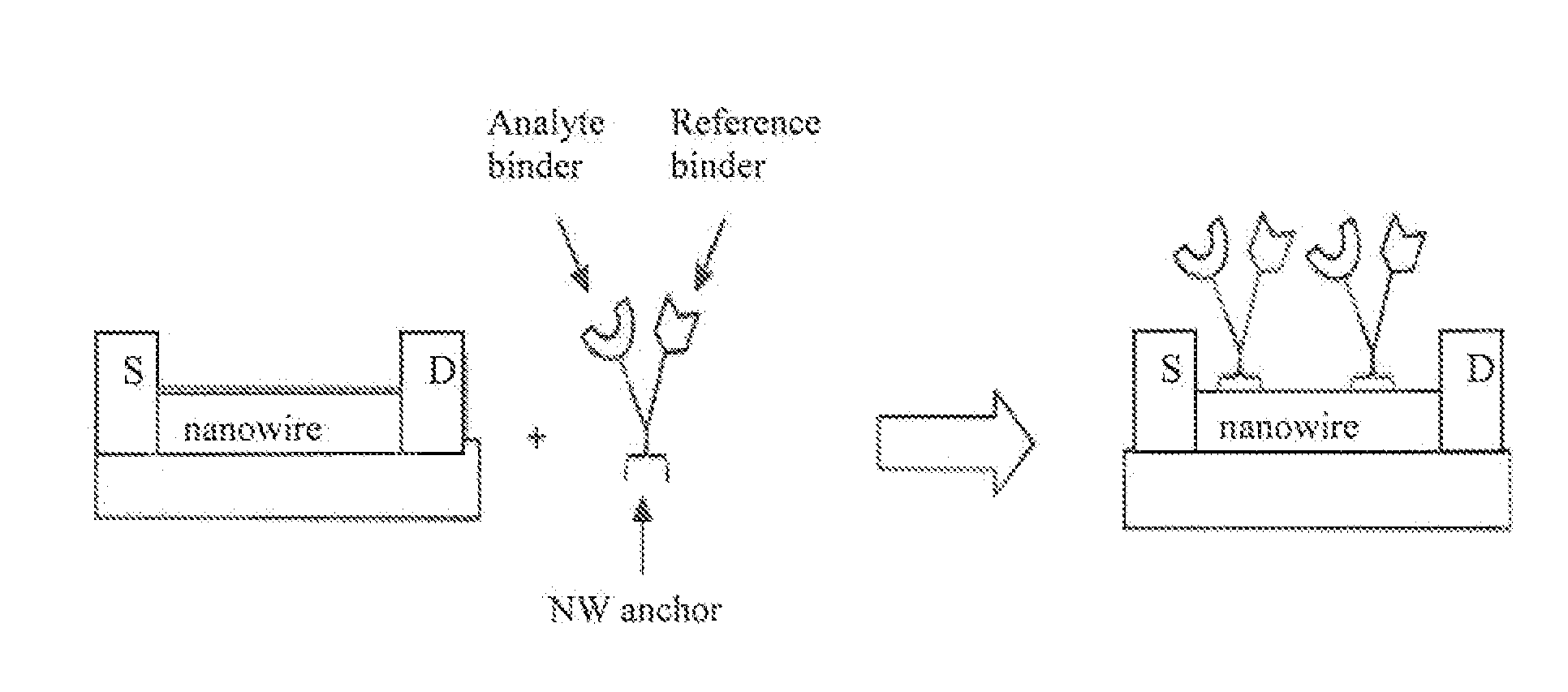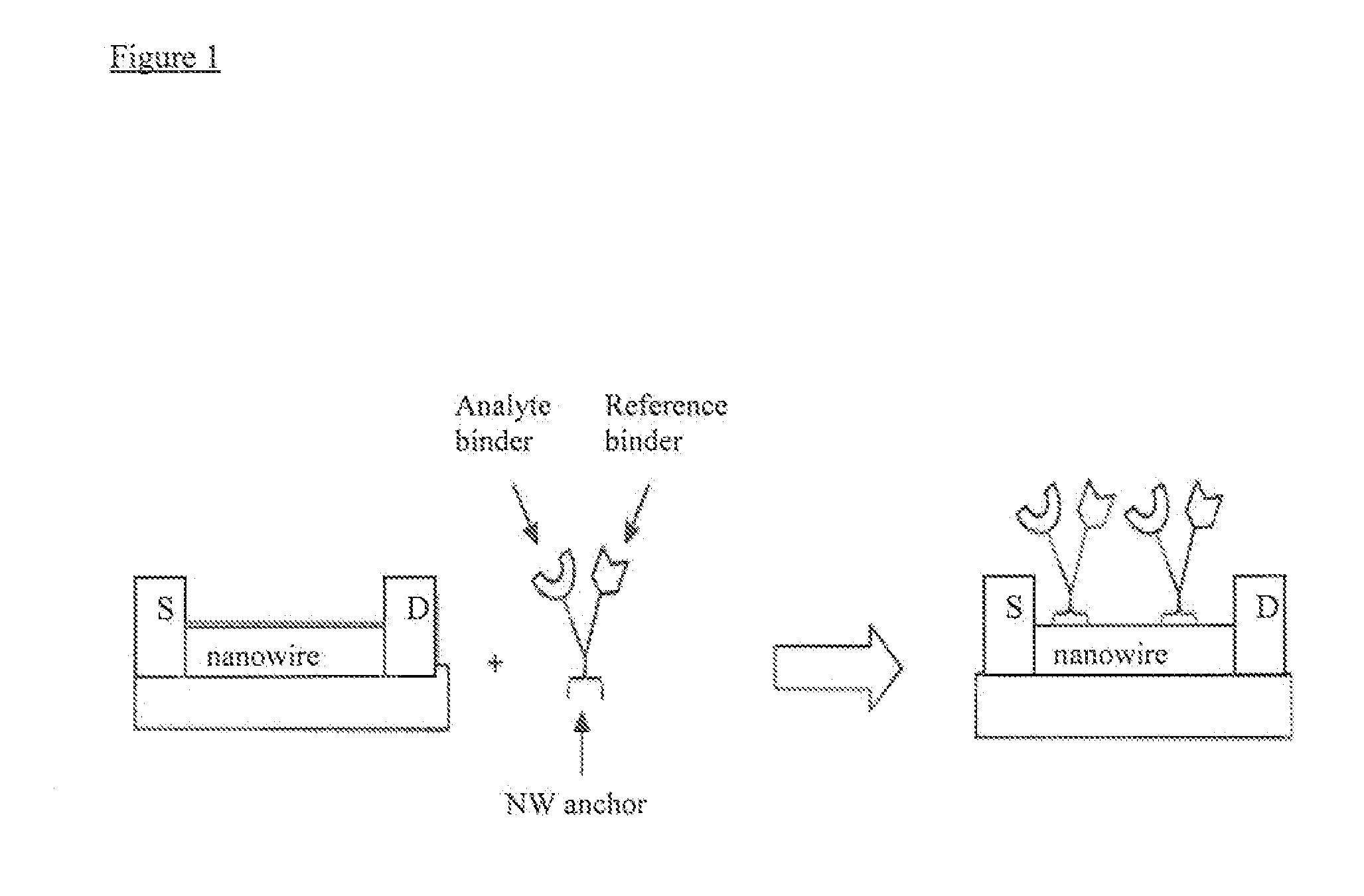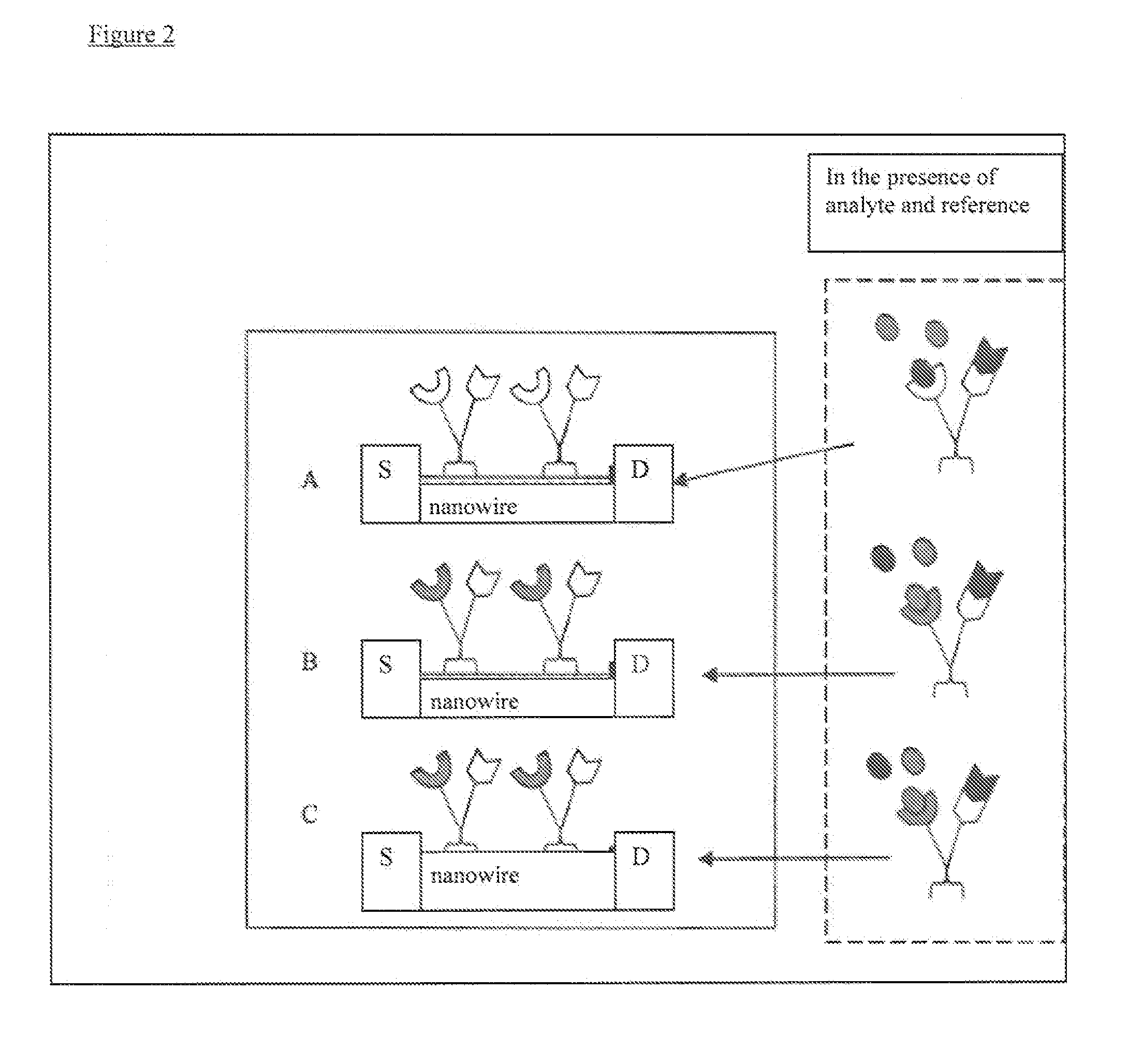Calibration methods for multiplexed sensor arrays
- Summary
- Abstract
- Description
- Claims
- Application Information
AI Technical Summary
Benefits of technology
Problems solved by technology
Method used
Image
Examples
example 1
General Makeup of a Sensor Array
[0025]The sensing element in the arrays may be a nanowire based field effect transistor (FET). FETs of this type are very sensitive to their environment. Since the semiconducting material in the channel of the FET is a nanowire (NW), small changes in the environment around the NW, such as temperature, pressure, ionic strength for solutions in contact with the wire, etc., lead to marked changes in the conductance of the NW and thus the performance of the FET. NW based FETs have been prepared with carbon nanotubes and a range of NW materials, such as Si, In2O3 and others. These devices have been used as chemical sensors for both gaseous and solution samples. While these FETs are sensitive to their environment, they are not selective for a specific analyte. In order to generate a biosensor, the surface of the nanowire is coated with a molecule or biomaterial that selectively binds a desired analyte. This binding agent will selectively bind the analyte of...
example 2
Preparing a Multiplexed Array
[0026]To prepare a multiplexed array capable of detecting several biomolecules simultaneously, different devices must be coated with different binding agents. The agents may be, for example, oligonucleotides, antibodies, aptamers, or any other material that will bind the target analyte with high affinity and high specificity. Thus, if an array of ten devices is prepared and each coated with a different binding agent, this array could be used to measure the levels of ten different biomaterials at once. If the ten devices are placed close together on the substrate, this array can be coupled with a microfluidic delivery system and used to analyze very small samples, very rapidly. Thus, multiplexed sensor arrays may be produced that are capable of measuring a large number of biomaterials (potentially 100's or 1000's) in a single sample.
example 3
Preparing an FET Array
[0027]The FET array may be prepared by synthesizing NW materials in bulk, depositing them uniformly on the substrate and add source and drain electrodes on top of the substrate coated with NWs. This method requires that the NWs be uniformly dispersed over the surface, so that each pair of source and drain electrodes have a similar number of NWs in the channel. There will be some variation, since the NWs are randomly oriented over the surface. Adjusting the NW density on the surface and the source-drain structure, it is possible to make arrays where all of the devices have 10's of NWs in the channel. This variation in NW number between devices leads to device arrays that give channel conductance values within a factor of ten of each other. This was demonstrated for an array of 24 devices.
PUM
 Login to View More
Login to View More Abstract
Description
Claims
Application Information
 Login to View More
Login to View More - R&D
- Intellectual Property
- Life Sciences
- Materials
- Tech Scout
- Unparalleled Data Quality
- Higher Quality Content
- 60% Fewer Hallucinations
Browse by: Latest US Patents, China's latest patents, Technical Efficacy Thesaurus, Application Domain, Technology Topic, Popular Technical Reports.
© 2025 PatSnap. All rights reserved.Legal|Privacy policy|Modern Slavery Act Transparency Statement|Sitemap|About US| Contact US: help@patsnap.com



